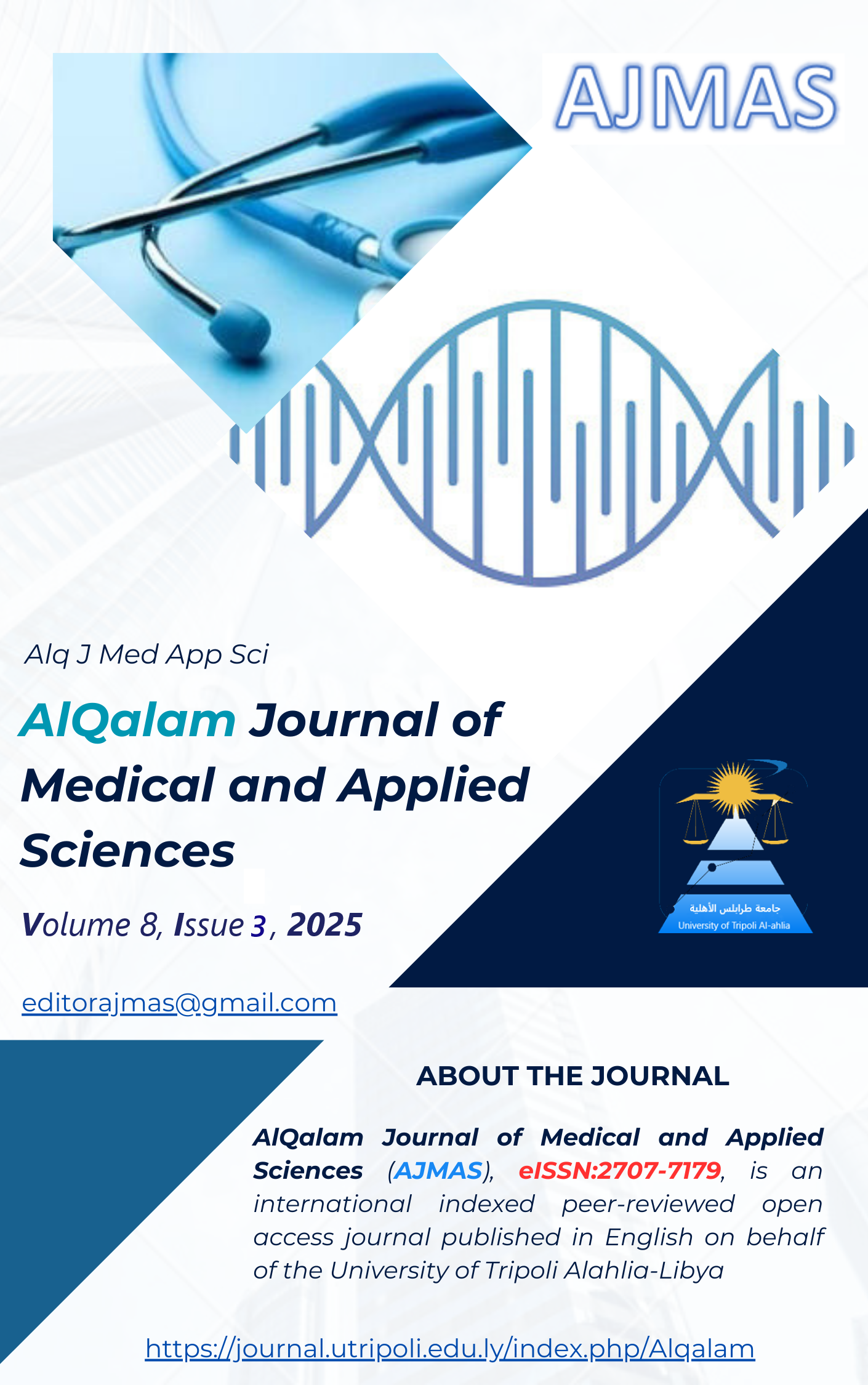Epidemiological and Clinical Characteristics of COVID-19 Cases in Libya: A Cross-Sectional Analysis of Contact History, Symptomatology, and Demographic Risk
DOI:
https://doi.org/10.54361/ajmas.258319Keywords:
COVID-19, Libya, Epidemiology, Symptoms, Contact Tracing.Abstract
While COVID-19 epidemiology has been extensively studied globally, data from Libya remain limited. This study addresses this gap by examining demographic characteristics, contact patterns, and clinical presentations among confirmed cases in an urban Libyan population during the early pandemic period. A cross-sectional analysis was conducted of 4,708 individuals presenting to COVID-19 screening centers in Tajoura, Libya (May-December 2020). Data were extracted from national surveillance records, including demographics, self-reported symptoms, contact history, and RT-PCR results. Statistical analyses identified associations between exposure risks and test positivity using chi-square and t-tests. The cohort (mean age 37.4±17.3 years; 54.9% male) showed high contact exposure (90.7% overall), particularly among children (95.0%) and females (92.9% vs 89.0% males, p<0.001). Myalgia (87.8%), fatigue (10.2%), and anosmia/ageusia (7.6%) were the most prevalent symptoms. Anosmia (p<0.001) and headache (p=0.003) showed the strongest associations with PCR positivity. No age-based differences in test positivity were observed (p>0.05), contrasting with global trends. This first large-scale study from Libya reveals distinct transmission patterns, including exceptional myalgia reporting and demographic-specific exposure risks. Findings underscore the importance of context-specific surveillance in humanitarian settings to guide targeted interventions in future epidemics.
Downloads
Published
How to Cite
Issue
Section
License
Copyright (c) 2025 Halima Buni, Amira Elghiadi, Omnia Eddali, Laila Sabei

This work is licensed under a Creative Commons Attribution 4.0 International License.















